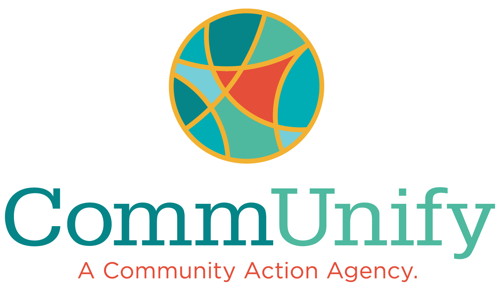New Name, Expanded Direction for Local Social Service Agency Established in 1960s
 SANTA BARBARA — Community Action Commission of Santa Barbara County, a non-profit social services organization with a six-decade legacy of helping provide solutions for people living in poverty, has changed its name to CommUnify.
SANTA BARBARA — Community Action Commission of Santa Barbara County, a non-profit social services organization with a six-decade legacy of helping provide solutions for people living in poverty, has changed its name to CommUnify.
“We’ve come a long way in the 50+ years since we began,” said Patricia Keelean, CEO of the agency initially established here in 1964. “Our new name and refocused identity, tells the story of who we are now and aligns with a retooled master plan to address our commitment to seeing our whole community come together in partnership to address inequalities.” The new name is accompanied by the tagline A Community Action Agency.
Community Action Commission of Santa Barbara County (also known as CAC) was originally founded out of a powerful social movement in the 1960’s created by the advocacy of Dr. Martin Luther King, Jr, and President Lyndon B. Johnson’s War on Poverty. The Economic Opportunity Act of 1964 created a network of national and locally-focused Community Action commissions that connected millions of children and families to greater opportunity. “Commission” was a word used to describe an older model of a government-supported agency, supervised by county appointees. “That really doesn’t represent who we are,” explained Keelean. Our board of directors has always included public officials, but we also include board members from the private sector, as well as low-income representatives.”
Beginning with its incorporation as a private non-profit organization in 1967, CAC provided Head Start education to preschool children and their families, and then, over the years, expanded its services and reach into the community with
• high-quality care and learning experiences for children ages 0-5, including Head Start
• job training, education, and mentoring for teens and young adults
• leadership, involvement, and educational opportunities for parents
• healthy daily meals for children and seniors
• improvements that make homes warmer, safer and more energy-efficient
• a free, confidential community helpline (2-1-1 Santa Barbara County) operating 24/7
CommUnify’s refreshed strategic plan will continue these programs and services but will also address contemporary issues that disproportionately impact low-income individuals and families such as social inequities, voter engagement, climate change and the “digital divide.”
For example, the new plan confronts technology issues that didn’t exist in 1964. The “digital divide” in education means that students without access to computers and an internet connection are at a critical disadvantage. The same is true of job-seekers. “During the pandemic, we have seen that technology at home is crucial to public health, yet we know that many families cannot afford an internet plan,” said Keelean.
Further information on CommUnify’s current programs and services are available on its new website at www.CommUnifySB.org
According to the Los Angeles Times, “some political scientists, historians and experts believe that the COVID-19 era could shift the national discourse…and ultimately lead to an expanded social safety net that more closely resembles those in other affluent nations. The health, economic and inequality crises currently plaguing the U.S. could well prove the most consequential since two previous eras of deep transformation in the U.S., namely the 1930s and the 1960s.”
“In many ways, CommUnify is going back to its 1960s roots,” said Keelean. “Although we’ve made progress in the fight against poverty, we have one of the highest rates in the state, primarily due to the lack of affordable of housing.” Santa Barbara County has a poverty rate at approximately 21.1% of the population – primarily the “working poor” and children.
“America was built on the promise that every family should have an opportunity for success,” said Keelean. “Heading into this new decade and new era, CommUnify will continue to uphold yet also expand that promise – by providing the services and support that empowers sustainable independence for all residents of Santa Barbara County.
